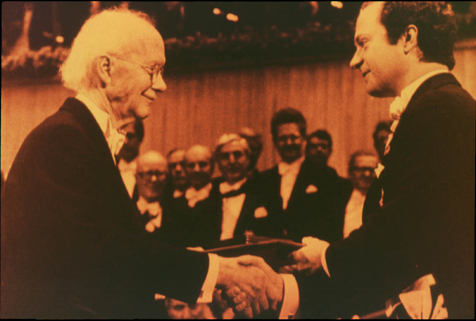
Faculty Research 1980 - 1989
Analysis of the tissue-specific expression, developmental regulation, and linkage relationships of a rodent gene encoding heart fatty acid binding protein.
Document Type
Article
Publication Date
1987
First Page
9709
Last Page
9717
JAX Source
J-Biol-Chem. 1987 Jul 15; 262(20):9709-17.
Grant
DK37960, GM07200
Abstract
The rat contains at least three homologous cytosolic proteins that bind long chain fatty acids, termed liver (L-), intestinal (I-), and heart (H-) fatty acid binding protein (FABP). I-FABP mRNA is confined to the gastrointestinal tract while L-FABP mRNA is abundantly represented in hepatocytes as well as enterocytes. We have isolated a rat heart FABP cDNA clone and determined the pattern of H-FABP mRNA accumulation in a wide variety of tissues harvested from late fetal, suckling, weaning, and adult rats. RNA blot hybridizations and primer extension analysis disclosed that the distribution of H-FABP mRNA in adult rat tissues is different from that of I- or L-FABP mRNA. H-FABP mRNA is most abundant in adult heart. This mRNA was also present in an adult slow twitch (type I) skeletal muscle (soleus, 63% of the concentration in heart), testes (28%), a fast twitch skeletal muscle (psoas, 17%), brain (10%), kidney (5%), and adrenal gland (5%). H-FABP mRNA was not detected in adult small intestine, colon, spleen, lung, or liver RNA. Distinct patterns of developmental change in H-FABP mRNA accumulation were documented in heart, placenta, brain, kidney, and testes. Myocardial H-FABP mRNA levels rise rapidly during the 48 h prior to and after birth, reaching peak levels by the early weaning period. The postnatal increase in myocardial H-FABP mRNA concentration and its relative distribution in adult fast and slow twitch skeletal muscle are consistent with its previously proposed function in facilitating mitochondrial beta-oxidation of fatty acids. However, the presence of H-FABP mRNA in brain, a tissue which does not normally significantly oxidize fatty acids in late postnatal life, suggests that H-FABP may play a wider role in fatty acid metabolism than previously realized. Mouse-hamster somatic cell hybrids were utilized to map H-FABP. Using stringencies which did not produce cross-hybridization between L-, I-, and H-FABP DNA sequences, we found at least three loci in the mouse genome, each located on different chromosomes, which reacted with our cloned H-FABP cDNA. None of these H-FABP-related loci were linked to the gene which specifies a highly homologous adipocyte-specific protein termed aP2 or to genes encoding two other members of this protein family, cellular retinol binding protein and cellular retinol binding protein II.(ABSTRACT TRUNCATED AT 400 WORDS)
Recommended Citation
Heuckeroth RO,
Birkenmeier EH,
Levin MS,
Gordon JI.
Analysis of the tissue-specific expression, developmental regulation, and linkage relationships of a rodent gene encoding heart fatty acid binding protein. J-Biol-Chem. 1987 Jul 15; 262(20):9709-17.

